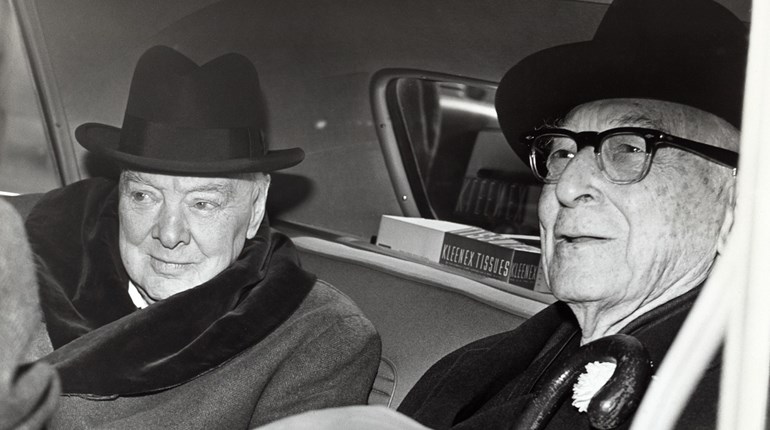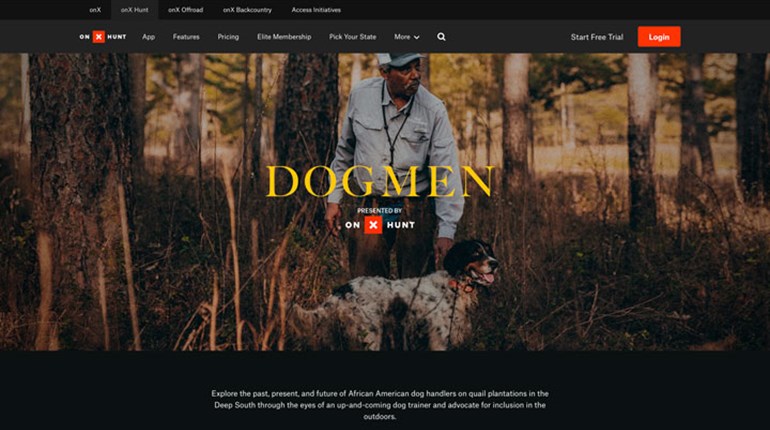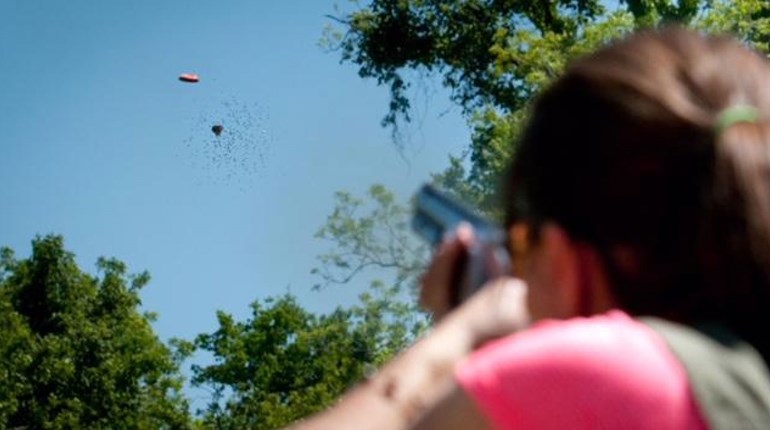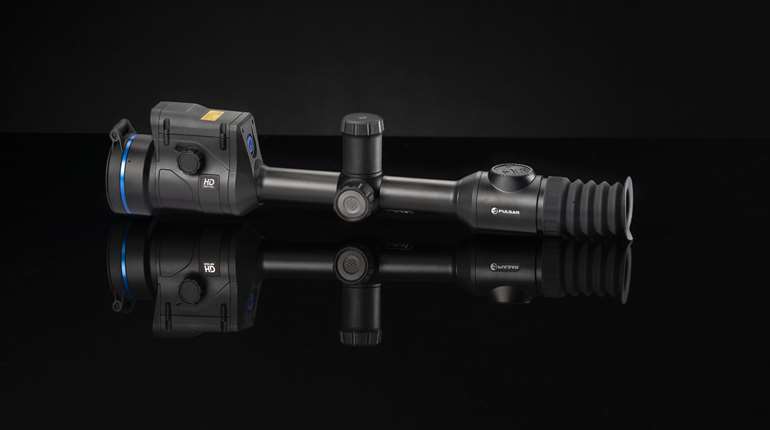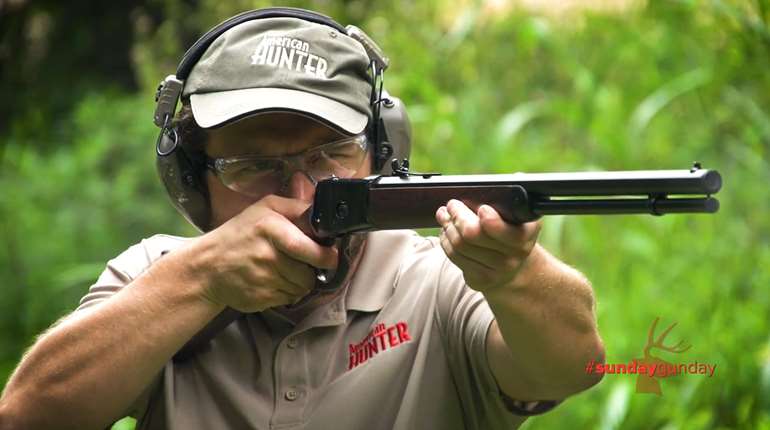When I looked back for the dog there was a flash in the sky, just above the trees at the far end of the field. It was bright white against the blue and was on the move. It banked and came closer, still white but less luminous, and now I realized the flash had been a flock of snow-white birds lit up by the rising sun, egrets headed for a cow pasture.
One man up ahead shouted, “Point! Point!” so I spun in his direction and caught sight of the petite pointer bitch, creeping like a predator ready to pounce. “Point!” he yelled again. That covered much of the working English possessed by our guide and his helpers, but enough said for now.
I heard the brrr of wings before spotting a pair of quail zipping through the tops of the waist-high grass, fast as a wink, as dark and furtive as the egrets had been pale and showy. I mounted my gun, fired, missed; then my partner, Greg, duplicated the errant sequence. There was another flusher, a hard right, and this time I connected. Greg was shooting again, too. I ignored the next single, instead reloading yellow 20-gauge hulls into the Benelli’s magazine, figuring the biggest part of the covey had yet to launch.
Bingo! A bunch jumped in unison, and in three beats I fired my gun dry, dumping one more bird in the process. Several paces left, another squad took flight, taking advantage of my tardy reloading technique.
“Muerte, muerte,” shouted the crew. It was a command for the dog—Find the dead birds—but in fact rallied everyone to join the search for the smallish, well-camouflaged quail buried in the high, matted cover. As the guides bent in concentration and the dog worried about our circle, Greg and I pawed the edges, hoping for a close-up look at the game that had brought us to the Mexican state of Yucatan, the black-throated bobwhite.
“Well?” he asked with a cat grin.
“Now that is how a covey rise should work,” I answered. “Though not exactly how two guys with shotguns should work a covey rise.”
“Just getting started,” he assured me.
As a hunting destination, Mexico has taken a PR beating in recent years and for good reason. With the country’s drug war raging to levels we can’t fathom, media accounts of murder, kidnappings, corruption and localized anarchy paint the only picture most of us see. Like other Americans, hunters have cut back on travel there, particularly in the corridor along the U.S. border, where the worst of the narco-terrorism has curtailed once-popular deer, turkey and wingshooting excursions. As a result, some outfitters have folded and long-time leases are being dropped. Even so, not everyone is deterred, and for proof take a look at prices of desert bighorn hunts in Sonora and Baja California. There’s been no slack in demand for the coveted rams, and despite the turmoil, some American hunters, after analyzing the risk, still choose to go.
With all that in mind, I entered the country with eyes wide open. The Cancun airport was tourist bedlam, but posed nothing scarier than an hour-long line to the passport-control stations. Outside I met up with NRA Outdoors director Greg Ray and the five other Americans in our party, after which it was smooth sailing to the hunting area, a drive that took us through tropical cattle ranches and small towns built around plazas dominated by historic Catholic churches. The blacktop roads were in good repair, busy with cars and trucks, and naturally the signs were in Spanish. It resembled other parts of rural Mexico I’ve visited, perhaps more prosperous and minus the ever-present dust of desert environs.
We motored to the coastal village of San Felipe and checked into a quiet hotel whose large, clean, tiled rooms featured postcard views of the community marina, and beyond it, the wide-open Carribean. A mix of interesting birds patrolled the waterfront, including graceful frigate birds and big brown pelicans that glided on the thermals before landing with a plop. Across the street two men mended a fishing net heaped across half the porch where they were working. The lock on my door, I noticed, was flimsier than what I’m accustomed to in stateside hotels. At first that bothered me, but I reasoned it must mean there wasn’t a need for something stouter, and with ocean breezes cooling the room, I napped before rejoining our group for dinner.
Prior to the trip, Greg promised that in addition to fine wingshooting, we would enjoy the locale itself, particularly San Felipe with its pastel cottages and a harbor teeming with fishermen working from small open boats. The fresh seafood would be incredible. The locals were friendly, he insisted, and there were no security concerns. Of course as a professional agent for hunting and fishing travel, Greg is a salesman, and a darned successful one. For more than a decade, it’s been his job to uncover the very best sporting-life values, and then to arrange hassle-free trips that make hunting and fishing dreams come true. Since those dreams come with all sorts of expectations and budgets, Greg has worked hard to build up a diverse “inventory” that ranges from deer, turkey, birds and hogs across the United States and trophy game in the Rockies, Alaska and Canada to international offerings that include African safaris, New Zealand, Argentina and the hunt I joined in Mexico’s Yucatan Peninsula.
A couple years ago, Greg allied with NRA to form NRA Outdoors. The exclusive service ensured NRA members would receive preferential access to top-notch adventures, while earmarking a portion of the proceeds to help the fight for firearm and hunting rights and to fund shooting education. NRA Outdoors soon attracted attention from members who found trips to match their interests, and buoyed by the growth, it was recently decided to bring the operation in-house as a full-fledged part of NRA General Operations, with Greg and his wife, Deborah, as full-time staff. This new service represents one more great reason for outdoorsmen and women to count on NRA to uphold hunting values that mean so much to us.
Greg and I killed 14 birds over the course of that first morning, a good start, though nothing prodigious in upper-strata wingshooting.
The hunting ground consisted of spacious fenced pastures, one after another. Overgrown in a rank mix of weedy grasses, tall, thick and wet with dew, it was all but impossible to see our boots. That, along with ubiquitous patches of jagged limestone, made the footing surprisingly unsteady. Though there were no hills to speak of, this was no easy stroll over the back-40, especially when the cadence quickened as the dogs grew birdy. After falling a few times, we learned to tread carefully.
Recovering our kills proved equally difficult. Thankfully the guides were resolute and skilled, and for pointers, their dogs were relatively helpful. Greg and I managed to dig some out of the tangle, but if we failed to mark a fall carefully, we were in for a tough search. That slowed the normal tendency to follow-up on coveys after the first round of shooting, though at times we were swept up by wingbeats that cued more dark-brown missiles streaking from the ragged growth, and the swing-and-fire reflex was irresistible.
A few times after smartly recovering our birds, we managed to re-engage a covey, but the odds weren’t good. No doubt they were running, but how the short-legged puffballs made headway in that gnarly stuff I found hard to imagine.
Along the way I learned a lot about the area from our Mexican host, Galo Munoz, who organizes quail, dove, duck, ocellated turkey and deer hunting across the peninsula. A trim, well-spoken man, his entry into the guide business came from a passion for dog training. Early on Galo worked with police and rescue K-9’s, but then a friend asked if he’d try his luck with a failed bird dog, and that struck a nerve. Now he maintains a kennel of gundogs to work seasons that hopscotch from late summer through early spring.
As we drove through one ranch, Galo explained that he normally “rests” fields two or three years between active shooting seasons. However, this season he had to wonder about that practice, because the grass had grown so freakishly during months of heavy rains. Only 10 percent of his leased acreage was huntable, he said, because it’s just too tough to locate and flush birds when the cover is so tall. It was good news for the quail, and indeed there were lots of them, but it made us work harder to get our game.
Galo also provided a history lesson, informing me that the small ponds I’d seen scattered throughout the pastures were actually cenotes, or sinkholes in the surface limestone exposing the shallow freshwater table below. When the Mayan civilization flourished here prior to 1000 A.D., towns and cities were sited to take advantage of major cenotes. It was the only way the landscape could support a population that far exceeded the number of folks living there now. While northern Yucatan is hardly a wilderness, today’s ranches are huge and widespread, and so it was hard to envision the scene a millennium ago when the area bustled with farming villages that supported the dominant Mayan city of Chichen Itza, whose pyramids remain less than 100 miles to the west.
Convinced I had enjoyed a fair sampling of what Yucatan quail country had to offer, I decided one morning to leave my shotgun in the truck and instead carry cameras to tag along with a couple of Texans, Roy Wilson and Billy Hablinski, long-time hunting buddies who get together for gunning and good times at home and elsewhere.
Right away the pointer went birdy and we started jumping quail. Roy and Billy were on the money, dropping birds left and right, rarely missing. As we bumped one covey after another, the adrenaline spiked and the pace accelerated until guides, dog, hunters and camera guy were basically power-walking between points, stopping only for the flush, the shooting and then picking up birds. The group functioned as a unit, our dog was sharp, and nearly every time lead guide Harvey Chule Yao whistled, quail answered. Every few hundred yards we hit more birds. It was exhilarating and exhausting, and along the way my right boot completely fell apart, leaving me to hobble across the prickly ground half unshod.
But Billy kept us laughing, likening the black-throated bobs to “bumblebees on steroids,” cussing blue the time he missed an entire volley. Roy was in a zone, hitting doubles and triples, and was equally impressive marking and finding his dead birds. Between coveys, both buddies were saying this is how, at its best, Lone Star quail hunting used to be … but not any more. Regardless, I can testify that Texas quail hunters can still get it done in the wake of 20-some covey rises in a little more than two hours.
Before we headed in for lunch, Harvey and his crew hung the combined bag of almost 40 birds on fence wires so we could record the bounty of a tremendous morning. Then we made plans to feast on fried quail at our evening meal.
I daydreamed about tasty white-meat quail and cold cerveza as I stepped from Galo’s van into the afternoon heat. Though much hotter now than in the a.m., the previous afternoons had been productive. Inspired by the morning’s exploits, I urged the other two hunters, Ken and Ginger Chandler, to come along to tramp fields adjacent to where Billy and Roy mopped up. We were hoping for a big finish to our three-day Yucatan adventure.
For practical reasons—chiefly the soaring midday temperatures—hunt days are structured around early and late outings, six all told if you choose to go out each chance. Believe it or not, many clients opt out of a session or two, which may sound crazy considering what the guided hunt costs (currently $2,895), but the alternatives are attractive. Greg and I skipped out one afternoon to go tarpon fishing, and while everyone reluctantly declined a field trip to the famed Chichen Itza ruins, most of us devoted one midday to boating out into the coastal mangrove where the abundant bird life includes exotic egrets, herons, pelicans, whistling ducks and even flamingos, several hundred of the neon waders occupying a lagoon of honest-to-gosh pink-tinted water. The gist is here’s where people go for a laidback tropical getaway from winter doldrums, and it just happens to coincide with the best time for wingshooting. Quite purposely, Greg Ray has fashioned this NRA Outdoors jaunt to accommodate it all or as much as his clients want. Or less, if that’s your preference, since it’s also good fun simply to poke around the streets and harbor in San Felipe, then kick back with a cold drink and soak up some rays.
Our last-chance threesome couldn’t rekindle the magic next door to where the Texas boys hit paydirt. The birds were hard to come by, and though we stuck with it until dusk, we managed just six covey rises and barely bagged a dozen. Compared to some other wingshooting excursions, NRA Outdoors’ Yucatan quail package is genuine hunting. Lots of tough walking is required and the shooting is the most difficult I’ve ever experienced for bobwhites, probably because the Yucatan breed is as wild as they come and tend to fly tight to the cover where they are harder to track. We found some outings were better than others, that luck was a factor, and no matter if you killed lots of birds or a few, you had to work for them.
I doubt Ken and Ginger were any more troubled by our slow evening than I was. We knew good food and good times awaited back in town, and besides, our trip wasn’t just hunting. We were travelers exploring an exciting new place. This offering from NRA Outdoors is unique, as is the case with every one of the service’s hunting and fishing trips. If your calling is to go all-in physically and mentally for elk or bears or bighorn sheep, the program can fix you up. If you dream about squaring off against dangerous beasts or sitting tight in a treestand watching for the buck of a lifetime, if your thing is sharing a duck blind with buddies or riding a packtrain through the scenic high country with your spouse and kids, NRA Outdoors has all that and more. Check out the possibilities at NRAOutdoors.com.












